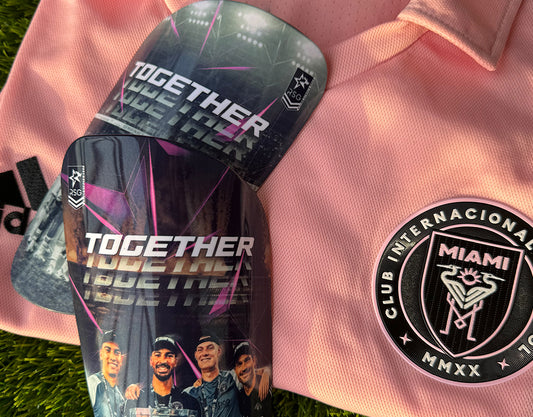The history of shin guards is as rich and diverse as the sports that necessitate their use. From ancient warriors to modern-day athletes, the need to protect one's lower legs has been a constant across centuries and civilizations. Today, we explore the fascinating evolution of shin guards, culminating in the latest trend of customized protection that is setting new standards in both safety and personal expression in sports.
Ancient Beginnings
The use of shin guards can be traced back to ancient civilizations, where warriors donned greaves made of bronze or other metals as part of their battle attire. These early shin guards were not just functional, protecting the lower legs from enemy attacks, but also served as a status symbol, often ornately decorated to signify rank and prowess in battle.
Into the Sporting Arena
As time progressed, the protective concept of shin guards found its way into the sporting arena. In sports like cricket and hockey, early adaptations of shin guards were crafted from cane and leather, offering players rudimentary protection against high-impact balls and sticks. Soccer, too, saw the introduction of shin guards in the late 19th century, a response to the game's increasing physicality and the need to safeguard players from injuries.
Technological Advancements
The 20th century marked a period of significant innovation in shin guard design and materials. The advent of plastics and synthetic materials revolutionized shin guard construction, offering better protection, lighter weights, and more comfortable fits. This era also saw the introduction of regulations mandating the use of shin guards in various sports, further cementing their role as a crucial piece of protective equipment.
Customization and Personalization
The latest chapter in the story of shin guards is characterized by customization and personalization. No longer are players limited to off-the-shelf options that only offer basic protection. Today, companies like Rhino Sports Gear are pioneering the way forward with custom shin guards that are designed to meet the unique needs and preferences of individual athletes.
Custom shin guards represent the pinnacle of protection technology, incorporating advanced materials like Carbon Fiber and Kevlar for unmatched durability and impact resistance. But beyond their protective capabilities, these modern marvels offer athletes the opportunity to express their personality and affiliation through personalized designs, colors, and logos.
Why Customization Matters
In today's sports landscape, where competition is fierce, and the margin for error is slim, having gear that fits perfectly and reflects an athlete's identity can make all the difference. Custom shin guards not only provide superior protection tailored to the wearer's specific requirements but also serve as a source of confidence and pride, allowing athletes to perform at their best while showcasing their unique style.
The Future Is Custom
As we look to the future, the trend towards customized sports equipment, especially shin guards, is only set to grow. Innovations in 3D printing and material science promise even greater levels of protection, fit, and personalization, making the next generation of shin guards more effective and expressive than ever before.
At Rhino Sports Gear, we're excited to be part of this evolution, offering athletes around the world the chance to experience the ultimate in customized protection. By blending historical insights with cutting-edge technology, we're not just protecting players; we're transforming the very way they gear up for the game.
The journey of shin guards, from ancient armour to personalized sports gear, reflects the human desire to combine safety with individuality. As we continue to push the boundaries of what's possible, one thing remains clear: in the world of sports, protection, and personal expression go hand in hand.




